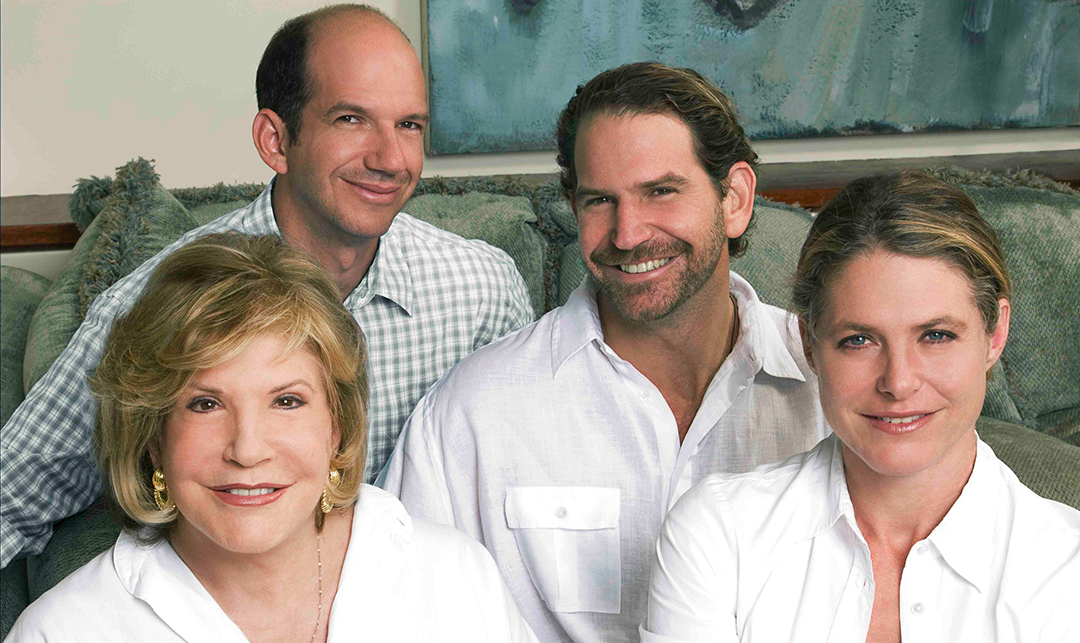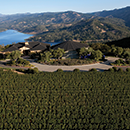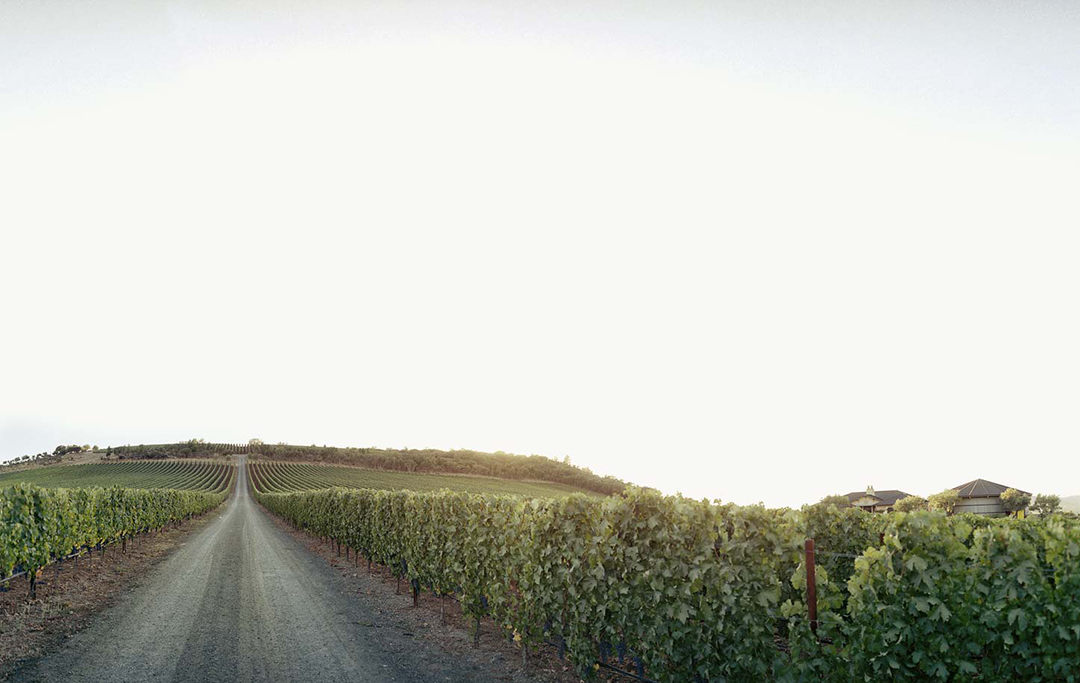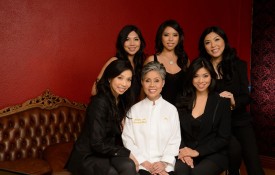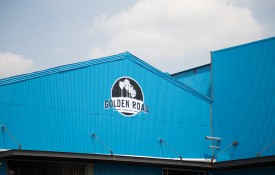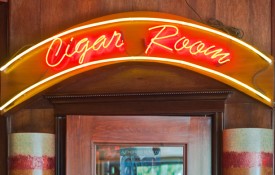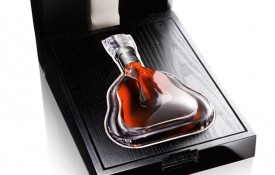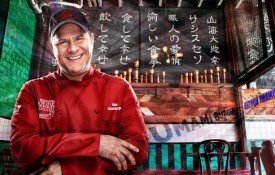Nestled in the rich volcanic hills of Napa Valley and overlooking shimmering Lake Hennessey, “IX Estate” might not initially seem all that different from the thousands of other vineyards in the area. But anyone fortunate enough to have tried the Colgin Cellars’ label knows the wine produced on this particular piece of land, or the others from which Colgin produces wine is something special.
A relatively new brand, the first bottle was released in 1992 by art collector and philanthropist Ann Colgin who heads the Collectors Committee at the Los Angeles County Museum of Art. With experience in the world of high-end art at Sotheby’s and Christie’s, she and husband Joe Wender, a senior advisor at Goldman Sachs, have elevated their product to become one of the most exclusive and sought-after small-production wines in the world.
“You can’t make great wine without great grapes,” Colgin imparts. “And the base element of great grapes is the choice of the land they are grown on.” The land Colgin refers to has a unique terroir, or soil mixture that is ideal for growing Cabernet Sauvignon and its brethren (Merlot, Cabernet Franc, Petit Verdot). The climate in the Napa Valley is mild with dry summers, allowing the grapes to struggle a bit to get their moisture and nutrients. In addition to the “IX Estate” land, where Colgin also built her state of the art winery, she vinifies a wine from a patch of land just North of the city of St. Helena which has a storied past. Napa’s first female vintner, Josephine Tychson, planted the first grapes there, but production was discontinued during Prohibition, and the land sat dormant for nearly a century.
As in all of the Colgin vineyards, meticulous attention to long term planning and every detail is tantamount to the success of the brand. For example, “when we bought the IX Estate it ended up taking us a whole year, 12 giant earth moving machines, and a little bit of dynamite to properly prepare it for planting. It [cost] us more than it cost to buy the land,” Colgin recalls. “It was a dramatic, difficult time, and it would still be seven years before we could even sell a bottle.”
The process Colgin’s wine goes through before it reaches the table is a big part of what makes it stand apart. Colgin-grown grapes get the “spa treatment” from vine to bottle. “What plant material we choose, how closely spaced the vines are, what the sun patterns are, how we farm the land, how much crop we leave on, how we treat the leaves . . . it all matters,” she explains.
Even harvesting is handled with special care. “We carefully select what clusters stay on the vine and then, when harvest time comes, the fruit goes through an expensive, highly selective sorting system before it is carried by gravity into fermentation tanks. The grapes that make the cut are pretty much the pure berry, and any that are not optimal are removed along with any remaining bits of stem, leaving only the beautiful varietal fruit.”
Even after such a rigorous production process, Colgin faces an enormous uphill battle simply to get noticed among the thousands of different brands in the market—not just coming out of Napa, but internationally as well. Here, however, Colgin has a distinct edge, having come from the world of rare, high-end art. In fact, it was that very background that was responsible for getting her into the wine business in the first place.
Ann Colgin & Joe Wender
After graduating from Vanderbilt with a degree in art history, Colgin studied at Sotheby’s in London where she fell in love with wine. She returned to the U.S. to work at Christie’s in New York, then went on to earn an M.A. in arts administration from New York University. Her mentor at Christie’s, Brian Cole, brought her to the Napa Valley Wine Auction in the late 1980s where he was a guest auctioneer. “It was really the art world and the auction world that brought me to wine,” Colgin tells us. “I had some background in French and Italian wines from my own hobby, but when Sotheby’s asked me to come open the wine department for their Los Angeles auction house in the early 1990s, I was able to do a lot of quick studying while tasting some of the greatest wines in the world.”

She met husband Joe Wender in 1997 while representing Sotheby’s at a dinner event in Beverly Hills honoring the legendary Burgundy producer Henri Jayer. Wender and Colgin connected over their interest in wine, and the two went on to buy the property in Napa near St. Helena that was to become IX Estate in honor of their marriage in 1999.
“Nine is something of a lucky number for us,” she says. “In Asian culture it stands for longevity, which we hope will be true for both the winery and the marriage.” Colgin has good reason to be tuned in to what Asian’s think of her wine label. In 2008, Hong Kong dropped its tax on imported wine, and the opening of that market has been fertile territory for small, top-class productions like hers. “It goes wonderfully with Asian umami flavors, especially sizzling beef and Peking duck,” she tells us. “We believe that since we’re striving to make one of the best wines in the world, it should be available around the world.
Colgin produces only 2,700 cases, or about 30,000 bottles each year, depending on the acquiescence of Mother Nature: three Cabernet blends and one Syrah. The winery sells mostly through their exclusive mailing list as well as through select restaurants, but Colgin and Wender have discovered that wine has philanthropic powers that go far beyond the price of a single bottle.
“Wine brings people together,” Colgin tells us. “I’ve always been amazed at how we can bring wine to the table to raise money for causes supporting health care, community services and the arts.” All told, Colgin has raised more than $9 million from the donations of their bottles of wine.
Colgin’s expertise and love of the art world led her to join LACMA’s board of trustees in 2008. For the past six years she has chaired the collector’s committee where she translated her fundraising success with wine into finding creative ways to get donors excited about building the museum’s collection. She expanded the collector’s weekend into seven dinners around LA, each hosted at a trustee’s home with a guest chef and a guest vintner. It has resulted in phenomenal success – this year LACMA acquired over $4 million of art.

Though his involvement with the Colgin label is mostly on the business (and tasting) end, Wender, too, is on numerous philanthropic, as well as for-profit boards. He, too, has experienced the magic wine brings to the table. “I’m not a golfer, which I always thought was a disadvantage in the business world, until I realized that having wine dinners with people can be just as bonding and a lot less frustrating,” he says with a laugh.
Wine is not unlike golf – it’s fairly easy to go from terrible to mediocre, but getting to that top tier requires hard work and a lot of patience. “People have been trying to make profound wine for 10,000 years and Colgin is just a blip in time—but we want to be a good blip.”
Wender shares his sense of perspective. “Our main goal is to make the best wine we can, expressing each of the individual sites we’re so fortunate to grow grapes on. But I don’t think anyone should drink just one wine; I think it would be sad if I just drank my own wine. We are trying to make a luxury product that you enjoy on a culinary level. It’s a special wine that we’ve had some success and we hope it continues.”









